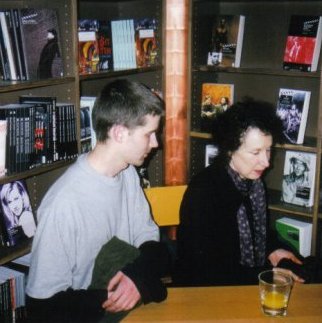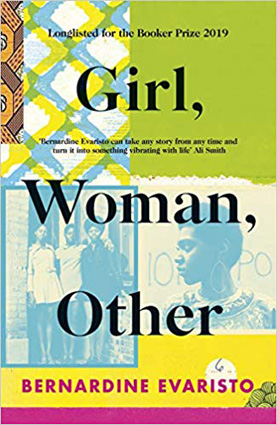Of the many reading initiatives that occur online, Women in Translation Month (#WITMonth) which happens in August is one of my favourites. So I’ve started the month with “The Collection” by Nina Leger, a slim newly-translated novel from France which has a very attractive cover although it’s most definitely not about mushrooms. It concerns a woman’s anonymous sexual encounters and while this might seem straightforward it’s given me a lot to think about it. So much so I have much more to say about this book than some other much longer novels and that’s not just because of its provocative subject matter. I was surprised by how emotionally engaged I felt with the story as well – especially because the full details of its protagonist’s identity remain pointedly obscure.
I admire fiction which deals frankly with sex because it feels like an important aspect of humanity which isn’t often dealt with in literary fiction in a proportion similar to how often it preoccupies our actual lives. Marlon James has commented in interviews how when sex is portrayed in literary fiction it’s often only referred to in ellipses or portrayed as a shame-filled activity. I think the difficulty a lot of authors have in writing about sex is that they don’t want their prose to come across as indulging in sensual fantasy or titillating for the sake of it. But equally there is a hesitancy when portraying all the awkward reality of people’s bodies.
The writer William Gass claimed readers don’t really want to see under the skirt because “What good is my peek at her pubic hair if I must also see the red lines made by her panties, the pimples on her rump, broken veins like the print of a lavender thumb, the stepped-on look of a day’s-end muff? I’ve that at home.” In “Bluets” Maggie Nelson gives an emphatic riposte to this assumption that readers only want an idealized portrayal of bodies engaged in sex: “For my part I have no interest in catching a glimpse of or offering you an unblemished ass or an airbrushed cunt. I am interested in having three orifices stuffed full of thick, veiny cock in the most unforgiving of poses and light.”
Nina Leger’s novel gives just such a frank view as it catalogues the sexual exploits of its protagonist Jeanne who visits many hotels having sex with anonymous men. Rather than flesh out the lives and personalities of any of these men or Jeanne herself, we’re only given explicit descriptions of the men’s genitals which Jeanne gathers to form a “memory palace” of these encounters. Who she is or why she prefers anonymous sex remains a mystery and Leger even playfully toys with the expectations of the reader that she might be a discontent wife, a trauma victim, a secret lesbian or a nymphomaniac. All we know is that her sexual exploits are an important aspect of Jeanne’s life and they are something she pursues with rigorous dedication.
The hotel rooms she visits aren’t spaces for her to enact a side of herself which she doesn’t show in her ordinary life. It’s stated “There will be no reverse side to the set, as the hotel rooms are not a stage; no concealed wings, in which Jeanne sheds her ordinary self in favour of an extraordinary costume.” Over the course of the novel it’s not Jeanne’s actions which feel performative, but the routine of ordinary life which reveals itself to be a façade. Hotel rooms are dressed to be as mundane and interchangeable as possible. People she encounters go about their days keeping sex a hushed and secretive activity. Society teaches people to keep their social identities and sexual identities completely separate.
In one hilarious scene Jeanne is on public transport and her bag which contains sex toys hangs open. A child tries to grasp one of these toys and its mother sharply remonstrates Jeanne demanding she close her bag while the other passengers gaze at her with amused disapproval. The awkwardness of this situation is acute, but Jeanne is entirely unapologetic about it because the difficulty is not with her; it’s the people around that have the issue as they are projecting their own insecurities and fears upon her. They are the ones that feel any open expression of sexuality is a transgression that must be kept behind closed doors.
Leger seems to comment on the way literature generally handles sex in novels when she describes Jeanne’s frustration at not being able to find someone like her in what she reads, “At one time, she looked for her alter ego in novels and sometimes thought she had found her there... In each new text, she hoped to find what the previous had lacked. At the beginning the heroines were bold and immoral; the first pages blazed, the lines throbbed with subversion. Then, this heartbeat diminished, became a miniscule pulse which dwindled little by little, until vital functions shut down completely; halfway through, the heroines had been irrevocably transformed into psychological composites devised for the purposes of explication and the novel, which had appeared free and wild, preferred to frolic in an enclosure of highly limited significations where sex could be nothing other than a symptom, the sign of a void that needed filling, of an anguish to be appeased, of a slowly healing wound.” The way Jeanne’s indulgence in sex is, of course, portrayed exactly opposite to this as being about unapologetic pleasure and the purpose for it is solely her own.
That’s not to say sex is portrayed as an unproblematic activity in this novel. Men treat her in many different ways so she experiences their repugnance, gratitude, embarrassment, indifference or emphatic attention. There’s a kind of violence in how men project their desires upon her and also explicitly reveal their fears and insecurities in ways they scarcely realise. She also finds the more she engages in sex the more her desires evolve. Desire can suddenly well up within her to be expressed in unexpectedly bizarre ways such as the impulse to lick rain water off from a stranger’s wet anorak. Leger also considers the weird mental space we often enter into when engaged in sex so there is a charged interplay between reality and fantasy. So we see from Jeanne’s perspective how “The room rhythmically disappears and appears” in a way which is surreal.
For some time, rather than seeing men she uses a range of sex toys and pornographic videos as she explores the different contours of pleasure. There’s a risk that sex will become such a habitual activity it becomes entirely meaningless. Some sections take on a hallucinatory feel as her physical surroundings meld into an anonymous mass: “Jeanne watches and the details blur; colours wear away; sounds lose their meaning; the volume flattens; movements fragment; bodies exist no more”. In this absence we feel Jeanne’s emotional strife as the activity of sex turns into sheer chaos and she comes perilously close to becoming no one at all “no more memories, no more body that belongs to her, no more reasons or causes”. We’re left wondering if this is liberation or a nightmare.
There’s an old adage that novels need their characters to overcome a conflict and change during the course of the story for it to be successful. Jeanne doesn’t change in that by the novel’s end she’s engaging in exactly the same kind of practices that she is in the beginning. But what’s changed is that she and the reader are more aware of assumptions being made about her and the expectations that are placed upon a sexually active woman. We can feel the will for her to stop this activity and concentrate on being a wife or mother or business professional. We’ve become so accustomed to sex being used as a tool or a means to move into a different stage of life that it’s very difficult to view it as just another instinctive human function. The reader is given no insight into Jeanne’s life outside her sexual pursuits or the meaning of her activity because it’s nearly impossible for us not to ascribe her actions to a larger false narrative about her being.































